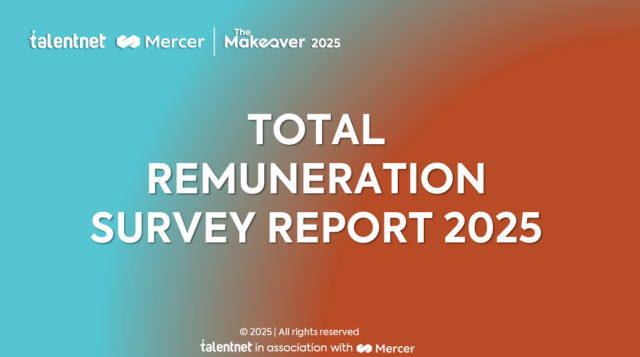Southeast Asia Salaries: What Need to Know

Jun 11, 2025
Last updated on Nov 26, 2025
The average monthly salary in Singapore is $4,410, while in Ho Chi Minh City it sits at just $502. This gap shows more than just different economies—it reveals the tough talent market that defines Southeast Asia salaries today. While this difference looks daunting, focusing only on base pay misses the bigger picture. The real challenge for CEOs working across this region is handling fast-rising salary expectations, growing talent turnover, and the key need to secure critical skills in a tough market.

Key takeaways
- Southeast Asia salaries vary dramatically, with Singapore averaging $4,410 monthly versus Vietnam’s $502, making one pay scale impossible.
- Vietnam leads the average salary increment in Southeast Asia at 6.7% in 2025, while tech sectors drive the highest increases.
- Talent retention has become the fourth-highest business risk, with some industries facing 23% attrition rates.
- Investing in key roles like cybersecurity works better than broad pay raises.
Understanding Southeast Asia salary trends is just the start for today’s business leaders. With employee turnover now a top-four business risk and salary budgets growing across the region, leaders must move beyond simple averages to build smart, market-specific strategies.
A snapshot of salaries across Southeast Asia
The pay landscape across Southeast Asia shows an economic reality that makes any regional pay standard both impossible and wrong. The average salary in Southeast Asia demonstrates huge differences that reflect very different economic growth stages, cost structures, and talent markets across major business hubs.
|
Rank |
City |
Country |
Average Monthly Net Salary (USD) |
|
1 |
Singapore |
Singapore |
$4,410.42 |
|
2 |
Kuala Lumpur |
Malaysia |
$1,321.38 |
|
3 |
Bangkok |
Thailand |
$839.84 |
|
4 |
Chiang Mai |
Thailand |
$757.23 |
|
5 |
Phuket |
Thailand |
$698.49 |
|
6 |
Manila |
Philippines |
$531.63 |
|
7 |
Jakarta |
Indonesia |
$522.22 |
|
8 |
Ho Chi Minh City |
Vietnam |
$502.90 |
|
9 |
Pattaya |
Thailand |
$486.52 |
|
10 |
Hanoi |
Vietnam |
$441.17 |
|
11 |
Phnom Penh |
Cambodia |
$423.78 |
|
12 |
Cebu |
Philippines |
$389.80 |
|
13 |
Bali |
Indonesia |
$280.58 |
|
14 |
Bandung |
Indonesia |
$261.14 |
Data collected within the last 12 months from Numbeo contributors and official sources (Last Update: June 10, 2025)
Singapore leads the regional salary landscape with its premium position as a global financial center and technology hub, where companies compete for world-class talent against global standards. These global salary rankings demonstrate how wages in ASEAN countries vary significantly based on economic development and market maturity.
The middle tier reveals significant opportunities, with Kuala Lumpur positioning Malaysia as a smart middle ground for companies seeking skilled talent at lower costs, while Bangkok shows Thailand’s growing appeal with big cost advantages over Singapore.
The emerging markets present strong value for smart leaders. Vietnam’s major cities offer access to fast-developing talent pools at competitive rates, while Indonesian markets represent the most cost-effective options but need careful thought about talent availability and infrastructure.
This diversity confirms that successful regional operations need location-specific pay strategies rather than broad approaches. Companies trying to apply uniform pay scales across these markets will either overpay in emerging economies or fail to attract quality talent in premium markets.

A closer look at talent trends in Vietnam and Thailand
These two markets are reshaping the entire region’s talent dynamics, with Vietnam posting the highest projected average salary increment in Southeast Asia and both countries prioritizing technology investments that signal tomorrow’s competitive landscape.
Vietnam: Leading the region in salary growth
Vietnam shows the most aggressive salary growth path in Southeast Asia. According to data from the latest Talentnet-Mercer Salary Report, the merit salary increase budget for 2025 in Vietnam is recorded at 6.3% for MNCs and 6.2% for Local companies. This figure significantly beats regional averages and reflects the country’s rapid economic development and increasing integration into global supply chains.
The technology sector drives this growth with projected salary increases of 7.5%, positioning Vietnam as an emerging technology powerhouse. For detailed insights into Vietnam’s salary landscape, companies recognize Vietnam’s potential as a technology development center and are willing to pay premium compensation to secure the necessary talent.
However, this growth comes with big retention challenges. In reality, Vietnam’s voluntary turnover rate in 2025 is clearly differentiated, with 12.8% in Multinational Corporations and up to 20.3% in Local companies, showing that while companies are increasing salaries, they face intense competition for talent. This dynamic creates both opportunities and risks for organizations establishing or expanding Vietnamese operations.
Thailand: A strategic focus on the tech sector
Thailand presents a more measured approach to salary growth, with businesses planning 4.7% increases in 2025. While more conservative than Vietnam, this growth rate still beats inflation and reflects sustained economic confidence and talent investment.
The technology industry receives particular attention in Thailand, with expected salary growth of 5.2%. This sector-specific focus aligns with Thailand’s government initiatives to position the country as a regional technology hub and reflects private sector recognition of technology’s strategic importance.
Thailand’s 16.6% attrition rate in 2024 mirrors Vietnam’s retention challenges, suggesting that across both markets, companies must balance competitive compensation with comprehensive retention strategies to maintain workforce stability.
Why average salary is not the full story
The focus on average salary figures hides the more critical business reality: talent retention has become a strategic need that directly impacts organizational performance and competitiveness. According to Aon’s Global Risk Management Survey, the failure to attract and retain talent now ranks as the fourth highest risk for organizations—a dramatic jump from its absence in the top ten risks just two years prior.
Attrition rates reveal the true cost of talent management failures across different industries:
- Consulting, business, and community services: 23%
- Life sciences and medical devices: 18.4%
- Energy: 18.0%
These figures translate into big replacement costs, knowledge loss, and operational disruption that far exceed the immediate expense of competitive salaries.
Despite these retention challenges, business confidence remains strong, with one in three companies planning to increase headcount by 5% to 20%. This expansion intention shows continued faith in regional growth prospects while highlighting the urgent need for effective talent acquisition and retention strategies.
The consistency of difficult-to-fill roles provides strategic insight for compensation planning. Information technology, engineering, and sales continue to dominate the hard-to-hire categories, showing persistent skill shortages that justify premium compensation and targeted retention efforts.

How should you adjust your compensation strategy?
The evolving talent landscape demands a key shift from broad-based salary adjustments toward precise, data-driven compensation strategies. The most successful companies are already showing this strategic evolution by becoming more selective in their compensation investments.
New hire premiums provide a clear example of this strategic refinement. Companies have reduced these premiums from previous highs of 13.3% to a more sustainable range of 1.3% to 8.2%. This adjustment reflects a more sophisticated understanding of talent value and market dynamics, moving away from panic-driven bidding wars toward calculated investment in critical capabilities.
The dramatic expansion in specific high-demand roles validates the targeted approach. These jobs with fastest pay growth demonstrate clear market priorities:
- Cybersecurity positions: 160% year-on-year increase in headcount with double-digit compensation growth
- AI and machine learning roles: 100% growth in hiring
- Risk management positions: 70% expansion in demand
These figures show that strategic investment in genuinely scarce skills delivers superior returns compared to across-the-board salary increases.
Companies viewing cybersecurity roles as crucial to their operations represent one in three firms, reflecting the universal recognition of digital security’s strategic importance. Understanding the business impact of salary structure helps organizations create sustainable demand that justifies premium compensation for qualified professionals.
The most effective strategy combines selective premium investment in critical roles with comprehensive retention programs that address the full employee value proposition. Rather than competing solely on salary, successful organizations are developing integrated approaches that include career development, work-life balance, and meaningful project assignments.
Success in Southeast Asia’s talent market requires moving beyond simple salary matching toward smart, data-driven workforce investment strategies. Organizations need comprehensive salary survey data to make informed decisions about Southeast Asia salaries and compensation positioning. The cost of inaction—shown by rising attrition rates and persistent skill shortages—threatens competitive position and operational stability. Leaders must act decisively now.

Solve your HR problems!
6th Floor, Star Building, 33 Mac Dinh Chi, Saigon Ward, Ho Chi Minh city, Vietnam




